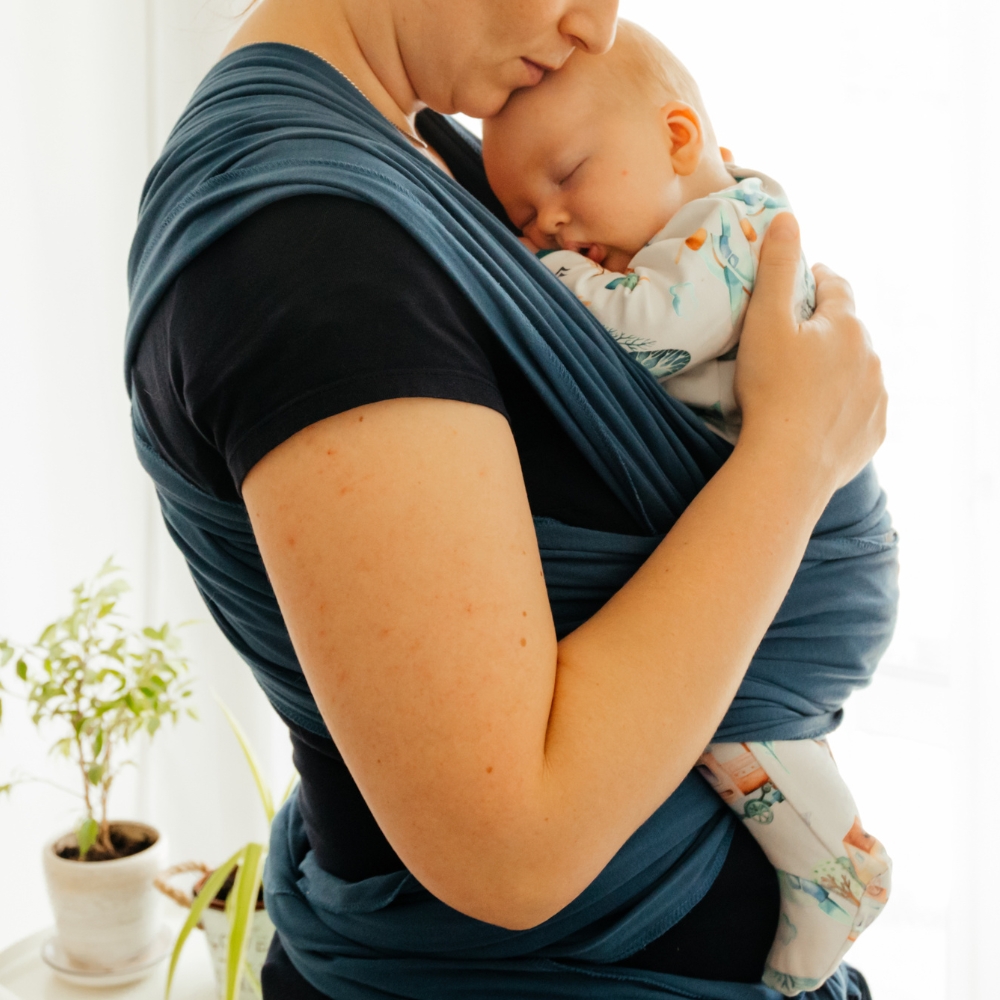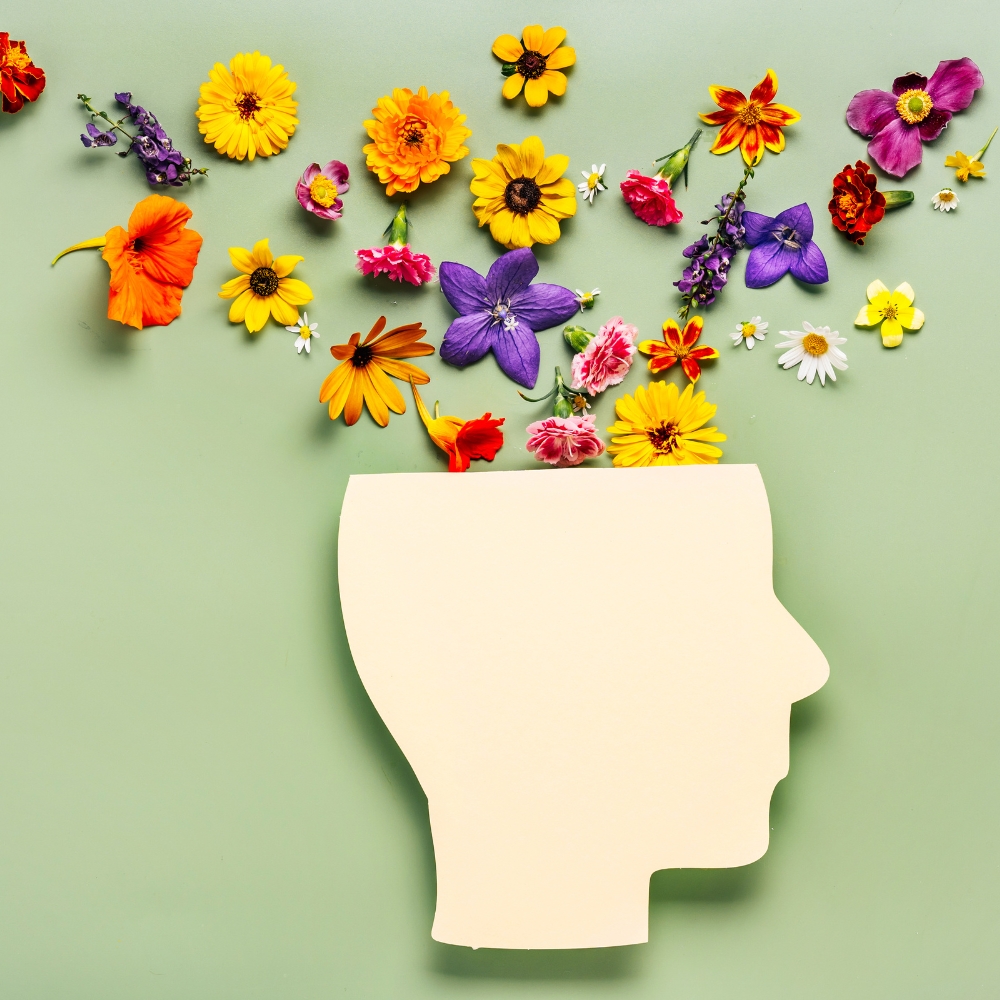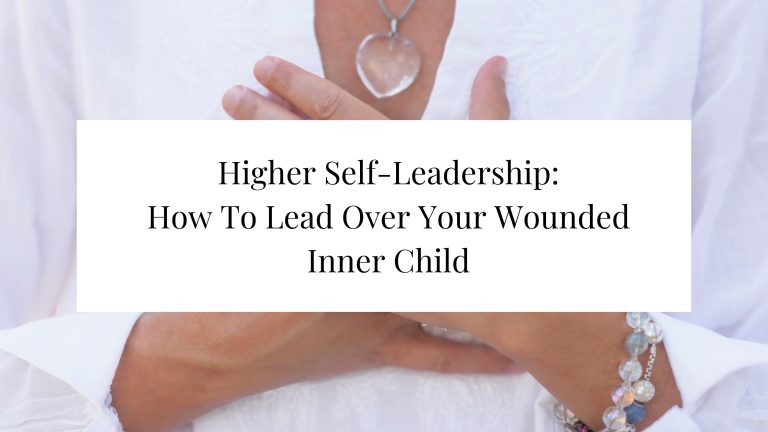Attachment Theory: The Secret to Healthy Relationships
Welcome to a fascinating exploration of attachment theory and its profound impact on our relationships. At the core of every human interaction lies our attachment style, a pattern of behavior rooted in early experiences and relationships.
Developed by psychoanalyst John Bowlby, attachment theory offers invaluable insights into how our earliest connections shape our approach to love, intimacy, and close relationships between human beings.
Understanding Attachment Theory
To grasp the significance of attachment theory, it is essential to understand its key components and pioneers. Attachment theory, coined by John Bowlby, highlights the importance of a child’s bond with their primary caregiver during early childhood.
Research by developmental psychologist Mary Ainsworth in the 1960s and ’70s underpinned basic concepts and topics relative to maternal responsiveness and sensitivity to infant distress. Ainsworth built upon Bowlby’s work, introducing the concept of the “secure base” and developing a theory of attachment patterns in infants: secure attachment, avoidant attachment, and anxious attachment.
Our attachment figure, typically a parent, serves as a secure base, providing emotional support, safety, and guidance for young children. Ainsworth’s “Strange Situation” test is a crucial tool in understanding attachment security in children and the impact of caregiver relationships on their development.

The Basics of Attachment Theory
At the heart of attachment theory is the belief that early experiences, particularly with the primary caregiver, shape a child’s attachment style, which continues to influence relationships throughout life and child development.
Bowlby proposed four essential patterns of attachment: secure attachment, avoidant attachment, anxious attachment, and disorganized attachment. These attachment styles are formed based on the caregiver’s responsiveness, sensitivity, and availability to the child’s needs, and individual differences in how children appraise the accessibility of the attachment figure and regulate their attachment behavior in response to threats. These individual differences can continue to affect later relationships through the Continuity Hypothesis.
Attachment theory emphasizes the vital role of a primary caregiver as a secure base for a child’s exploration of the world. The attachment figure provides a safe haven, offering comfort and support when a child needs it and promoting a sense of security.
Patterns of attachment, influenced by early experiences, significantly impact future relationships, intimate or otherwise, with a ripple effect on overall well-being. Understanding the basics of attachment theory is crucial to developing and maintaining healthy attachment relationships throughout one’s life.
Importance of Understanding Attachment Styles
Recognizing and understanding attachment styles in adulthood is essential for navigating the complexities of close relationships. Our attachment style serves as a lens through which we interpret and respond to emotional cues, intimacy, and conflict resolution.
By gaining insight into our attachment style, we develop self-awareness, enabling us to recognize patterns of behavior and emotional reactions in different relationship contexts, including relationship problems.
Understanding attachment styles fosters healthier connections with others as it sheds light on why individuals respond differently in relationships. It offers a framework to explore how emotional needs, communication, and trust are influenced by early childhood experiences.
Armed with this knowledge, we can work towards healing, growth, and forming secure relationships, harnessing the power of a secure base.
Is there a link between attachment style and romantic attraction?
Yes, there is a link between attachment style and romantic attraction. People with secure attachment styles tend to have healthier and more satisfying relationships, while those with insecure attachment styles may struggle with intimacy and experience difficulties in their romantic relationships.
Exploring the Four Attachment Styles
Let’s dive into a deeper understanding of the four attachment styles that shape our relationships. These attachment styles provide a roadmap for comprehending our emotional needs, expressing love, and managing relationship challenges.
The attachment styles include secure attachment, anxious attachment, avoidant attachment, and fearful-avoidant (aka disorganized) attachment, all of which have been identified in adult romantic relationships. Each style manifests distinct patterns of behavior, emotional regulation, and responses to intimacy, making it crucial to understand and identify one’s own adult attachment style for healthy relationships.

Characteristics of Secure Attachment
Secure attachment, marked by a balance of intimacy and autonomy, is considered the healthiest attachment style. Individuals who exhibit secure attachment, also known as secure attachment type, feel comfortable with emotional closeness and trusting others.
Mary Ainsworth’s research revealed that secure children actively explore their environment, knowing they can seek support from their attachment figure, typically a caregiver, when needed. They have a positive view of themselves and others, fostering resilience and emotional well-being.
About 56% of adults have a secure attachment type, according to foundational attachment research by social psychologists Cindy Hazan and Phillip Shaver in the 1980s. Understanding the characteristics of secure attachment, such as moderate levels of separation anxiety, is crucial to building healthy relationships.
Securely attached individuals navigate relationships with greater ease, as they possess a solid foundation of emotional security. They find it easier to establish and maintain healthy boundaries, communicate effectively, and respond empathetically to their partner’s needs. This attachment style fosters emotional stability, support, and a deep sense of trust in intimate relationships.
Traits of Anxious-Ambivalent Attachment
In contrast, individuals with an anxious-ambivalent attachment style crave closeness and intimacy, often fearing rejection or abandonment. They exhibit a strong desire for emotional connection but may also harbor insecurities about their self-worth.
Mary Ainsworth’s research highlighted that these individuals express high levels of anxiety, seeking reassurance and validation from their partner to ease their emotional distress.
Anxious-ambivalent attachment can lead to emotional highs and lows, as individuals oscillate between anxiety and the fear of emotional abandonment. These individuals may display clingy behavior, struggling with a constant need for reassurance. Their relationships can become characterized by emotional intensity, as their fear of separation heightens emotional reactions.
Identifying Anxious-Avoidant Attachment
Individuals with an anxious-avoidant attachment style desire close relationships but harbor deep fears of losing their independence. They may struggle with emotional intimacy, becoming emotionally distant to preserve their autonomy.
Mary Ainsworth’s research revealed that these individuals often prioritize self-reliance over emotional connection, avoiding emotional vulnerability.
Anxious-avoidant attachment patterns manifest in mixed signals, as individuals vacillate between the desire for emotional closeness and the fear of engulfment. They may feel suffocated or overwhelmed by too much intimacy, resulting in emotional withdrawal. Maintaining a safe emotional distance becomes a coping mechanism, thwarting the development of deep, secure relationships.
Recognizing Anxious-Disorganized Attachment
Anxious-disorganized attachment is a unique attachment style characterized by conflicting behaviors and disorientation. Individuals with this attachment style often struggle with trust, emotional regulation, and relationships.
Mary Ainsworth’s research uncovered that these individuals exhibit erratic and unpredictable behavior, a consequence of past trauma or unstable caregiving experiences.
Anxious-disorganized attachment can result in chaotic relationship patterns, as individuals struggle to establish emotional stability and security. They may experience difficulty forming coherent attachment strategies, leading to intense emotional reactions and disorganized behavior.
Due to their unresolved past experiences, these individuals may find it challenging to form stable and secure connections in adult relationships.
How Attachment Styles Develop in Childhood
Here, we’ll look at how the 4 different attachment styles play out. This is the story of 1 family, whose 4 children each have a different style.
Gregg and his partner Wendy have four healthy, happy children. They are lovely parents who give love, support and encouragement to all of their kids.
This includes eye contact, physical touch, clear communication and continual love and care. One day, Gregg develops an incurable illness and within the next six months he sadly, passes away.
For Wendy, life become very challenging. She is grief stricken and is becoming increasingly worried about finances and parenting for her four kids. She doesn’t have supportive family and is finding it hard to work fulltime and care for her children.

Secure
The eldest child Roxy is seven years old; her subconscious mind is well developed, and she also has a program of secure attachment as she received from many years of security, love and support.
The new change in circumstances doesn’t affect Roxy too much, she is resilient and able to change to the new ways of life well.
Life isn’t always easy for Roxy however she is resilient at her core due to her secure attachment and positive subconscious programs. She grows up to be a confident and trusting adult, she builds strong self-worth and excels in her career.
She can make strong bonds both platonic and romantic and goes on to have a good life, marry and have children of her own.
Anxious-Ambivalent
Fin is four and is still developing many subconscious structures.
Although the first years of life were very secure in nature, he is now having a challenging time coping with the lack of attention and support he is receiving from Wendy. Fin views his mother’s behaviour as unpredictable; their relationship leaves him feeling anxious.
As a result, he becomes increasingly clingy which causes Wendy further frustration.
Fin is not getting the attention he desperately desires and begins to raise his voice and try other types of behaviour to get his mother’s attention.
When he does succeed in getting it, he then acts in unpredictable ways and this pattern continues well into his adulthood. He experiences many challenges within relationships, his friends see him as moody, emotional, and up and down.
Fin doesn’t have very high self-worth and when he does attract romantic partners, he finds himself with unpredictable partners which makes him feel anxious and uncertain. Fin’s attachment style is anxious-ambivalent.
Anxious-Avoidant
Three-year-old Alex spends most of the time with his grandparents who love him but are very strict in their approach to caregiving.
If Alex shows emotions or behaviours that they feel are too much they raise their voices, threaten him with a smack or send him to his bedroom as punishment.
Alex learns that to avoid fear and strong emotions, he must avoid showing his emotions. At school he tries to be very well behaved and puts a lot of pressure on himself to avoid making mistakes, getting and trouble and ultimately showing his emotions.
He does his best to control his emotions but it’s a task that is challenging for a young person and this gets him down. At times he physically hides or avoids situations to avoid the emotions that he is feeling. He has low self-concept and self-trust.
He goes on to have problems in relationships and finds it’s hard to feel safe and authentic. Alex’s style is anxious-avoidant.
Anxious-Disorganised
Michelle is the youngest child she is only 18 months old. She spends her days at a nursery.
The staff there are poorly trained, overworked, and under resourced. All the staff are very stressed and on some occasions their behaviour could be described as negligent.
Michelle learns to fear the very people that should be there to support and care for her. These experiences completely disorganised her understanding of love and safety.
Subconscious programs begin to take form, congruent with her experience, that the world is an unsafe and unfriendly place where random things happen, and no one can be trusted. She learns that she is unworthy and unlovable she has very poor self-concept, self-trust, and trust in life.
As she grows up, she struggles with relationships others and herself. Michelle’s attachment is anxious-disorganised.
Impact of Attachment Styles on Relationships
Attachment styles exert a profound influence on our adult relationships, shaping our approach to love, emotional connection, and conflict resolution. By understanding attachment styles, we can navigate relationship dynamics more effectively, enhancing emotional intimacy, and fostering relationship satisfaction.

Secure Attachment and Relationships
Secure attachment serves as a foundation for healthy, fulfilling relationships. Individuals with a secure attachment style tend to experience greater relationship satisfaction, trust, and emotional security.
Their secure base of attachment allows them to develop strong emotional bonds, communicate openly and assertively, and provide support to their romantic partner. Securely attached individuals feel confident in expressing their needs, fostering a secure emotional bond with their partner.
They experience lower levels of relationship anxiety and are more adept at resolving conflicts constructively. Secure attachment style provides a secure base, facilitating emotional well-being, and support.
How Anxious-Ambivalent Attachment Affects Relationships
Anxious-ambivalent attachment style can present unique challenges in relationships, impacting one’s love life and emotional well-being. Individuals with an anxious attachment style often grapple with a deep-seated fear of rejection, abandonment, and emotional dependency.
In romantic relationships, they may express higher levels of anxiety, seeking constant reassurance and validation from their partner to alleviate their insecurities. This attachment style can lead to emotional turbulence due to the hyper-focus on relationship needs, heightened sensitivity to perceived threats, and fear of being left alone.
Recognizing the signs of anxious attachment style and developing coping strategies tailored to their emotional needs are vital for creating more secure, satisfying relationships.
Anxious-Avoidant Attachment and Its Influence on Relationships
Individuals with an avoidant attachment style, also known as dismissive, often prioritize self-reliance and emotional distance over emotional intimacy.
They may struggle with close relationships, finding it challenging to trust, rely on, or provide emotional support to their romantic partner. Avoidant attachment styles manifest as a desire for independence and a fear of engulfment, resulting in emotional detachment and a reduced capacity for intimate connection.
Recognizing avoidant attachment patterns, such as avoidant children, and cultivating a safe emotional environment in relationships can promote emotional growth, trust, and secure attachment.
Relationship Challenges with Anxious-Disorganized Attachment
Individuals with a disorganized attachment style often face significant relationship challenges due to their unresolved trauma or unstable caregiving experiences. Disorganized attachment patterns can lead to difficulties in establishing emotional stability, fostering secure emotional bonds, and regulating emotional responses.
These attachment styles often stem from childhood experiences and can result in emotional turbulence, alternating between emotional distance and emotional intensity in relationships.
Navigating relationship difficulties arising from disorganized attachment patterns requires a compassionate and trauma-informed approach, prioritizing emotional healing, and creating safe, stable relationship dynamics.
Additionally, in some cases, children may also develop attachment disorders such as reactive attachment disorder (RAD) or disinhibited social engagement disorder (DSED), which can further complicate relationships for individuals with disorganized attachment.
Changing Attachment Styles: Is it Possible?
While attachment styles are deeply ingrained, it is possible to change and cultivate more secure attachment patterns.
Understandably, rewiring attachment styles takes time, self-reflection, and intentional efforts. By embracing the possibility of change, we open ourselves up to personal growth, emotional healing, and healthier relationships.
Let’s explore the potential for transforming attachment styles, empowering ourselves to navigate relationships with greater security and emotional well-being.

The Possibility of Change in Attachment Styles
Attachment styles, though deeply rooted, are not immutable. Through self-reflection, therapy, and personal development, individuals can experience positive shifts in their attachment style from insecure to secure.
While research shows that attachment styles tend to remain stable, particularly secure attachment styles, the development of secure attachment is possible through intentional efforts and a secure emotional environment.
Future research continues to explore the potential for attachment style change and its implications for personal relationships, emotional well-being, and personal growth, including the impact of parenting style on attachment styles in children.
Steps to Shift Your Attachment Style
Shifting attachment styles requires self-awareness, intentional actions, and a commitment to personal growth. Taking steps to change your attachment style can positively impact your relationships, mental health, and overall well-being. Consider the following strategies:
- Cultivate secure attachment behaviors, such as active listening, emotional transparency, and supportiveness.
- Seek therapy or support groups to address childhood trauma, emotional wounds, and attachment patterns.
- Prioritize mental health, practicing self-care, and emotional regulation.
- Engage in social psychology research, developing an understanding of attachment styles and their impact on relationships.
- Surround yourself with a supportive social network, fostering a secure base of emotional support and connection.
Attachment Styles and Mental Health
Attachment styles play a significant role in mental health, as they shape emotional needs, coping mechanisms, and social support systems. Understanding the link between attachment styles and mental health allows us to address emotional well-being from a holistic perspective, considering early experiences, attachment patterns, and trauma.
By recognizing how attachment styles impact mental health, we can develop targeted approaches to increase emotional stability, foster secure relationships, and support personal growth.
Impact of Attachment Styles on Mental Wellbeing
Attachment styles profoundly impact mental wellbeing, influencing emotional needs, regulation, and social support systems. Secure attachment styles correlate with higher levels of emotional stability, resilience, and mental health.
Conversely, insecure attachment styles, such as anxious, avoidant, or disorganized, can contribute to emotional distress, difficulties in establishing social support, and vulnerability to stress. Recognizing the impact of attachment styles on mental wellbeing allows us to develop targeted interventions, foster secure attachment, and support emotional healing.
Coping Strategies for Different Attachment Styles
Managing different attachment styles requires tailored coping strategies that address individual emotional needs and relationship patterns. Consider employing the following coping strategies, depending on your attachment style:
- For secure attachment: Continue nurturing secure attachment behaviors, seek support, and maintain emotional honesty and transparency.
- For anxious attachment: Practice self-soothing techniques, communicate needs assertively, and seek reassurance from trusted partners.
- For avoidant attachment: Gradually increase emotional intimacy, communicate emotional boundaries, and work on vulnerability in safe relationships.
- For disorganized attachment: Engage in trauma-informed therapy, develop emotional regulation techniques, and seek support for healing past trauma.
- Prioritize mental health: Practice self-care, engage in therapy, and develop emotional regulation skills to enhance overall mental well-being.

Identifying Your Attachment Style
Measuring attachment styles allows individuals to gain insights into their emotional patterns, relationship tendencies, and attachment needs. Several methods have been developed, including the “Strange Situation” experiment, adult attachment interviews, and longitudinal studies.
These tools uncover attachment styles by assessing behavior, emotional responses, and relationship dynamics, offering a foundation for personal growth, relationship improvement, and emotional healing.
Tools to Identify Your Attachment Style
Several tools exist to help individuals identify their attachment style accurately. These tools, shaped by research in attachment theory, provide valuable insights into emotional patterns, relationship dynamics, and attachment needs. Consider the following:
- Strange Situation: This experiment, developed by Mary Ainsworth, observes how children react to separation and reunion with a caregiver, highlighting different attachment styles.
- Adult Attachment Interview: This interview-based method assesses adult attachment patterns, emotional experiences, and relationship dynamics, shedding light on individual attachment style.
- Reflect on primary attachment figure relationships: Reflecting on early relationships with primary attachment figures, typically parents or caregivers, can provide insights into attachment patterns, emotional needs, and relationship tendencies.
Understanding the Results
Once you have identified your attachment style, understanding the results becomes crucial for personal development, relationship improvement, and emotional healing.
Take the time to reflect on the implications of your attachment style, considering how it influences relationship dynamics, emotional needs, and personal growth.
Recognize that attachment styles are not fixed, and personal development is a lifelong journey. Career opportunities, emotional availability, intimacy, personal development, and cognitive dissonance could all be influenced by attachment styles, as documented by social psychology research, attachment theory, longitudinal studies, and personal anecdotes.
How Can Attachment Styles Enhance Your Relationships?
Understanding and embracing attachment styles can profoundly enhance your relationships, love life, and overall emotional well-being. By recognizing your attachment style, you gain a deeper understanding of your emotional needs, relationship tendencies, and patterns of behavior.
Armed with this knowledge, you can navigate relationships with greater awareness, cultivate secure attachment, and foster emotional intimacy with your romantic partner, friends, and family. Attachment styles pave the way for a deeper connection, personal growth, and a love life characterized by security, trust, and fulfillment.
Is Your Attachment Style Affecting Your Love Life?
Exploring the influence of attachment style on your love life unveils a rich tapestry of emotional patterns, relationship dynamics, and personal growth opportunities. Understanding how your attachment style affects your romantic relationships allows for a deeper exploration of your emotional needs, love language, and attachment needs.
Delving into your attachment style can unveil patterns of behavior, emotional barriers, and relationship dynamics in intimate connections. Intentionally aligning your attachment style with a compatible partner can pave the way for a love life characterized by security, emotional support, and a deep emotional bond.

Invite Love & Healthy Relationships in!
Understanding attachment theory can be a game-changer in your relationships. By recognizing your own attachment style and that of your partner, you can navigate the ups and downs with more clarity and compassion
A study with young adults showed that people have different attachment styles for various types of relationships, like with parents, friends, and romantic partners (Caron et al., 2012).
Secure attachment sets a strong foundation for healthy connections, while anxious-ambivalent attachment may require open communication and reassurance. Anxious-avoidant attachment calls for creating a safe space for vulnerability, and anxious-disorganized attachment may benefit from therapy and healing.
Remember, attachment styles can evolve, and with self-awareness and intentional steps, you can shift towards a more secure attachment style. Enhancing your attachment style not only improves your relationships but also positively impacts your mental well-being. So invest in understanding yourself and your attachment style, and watch your relationships flourish.



